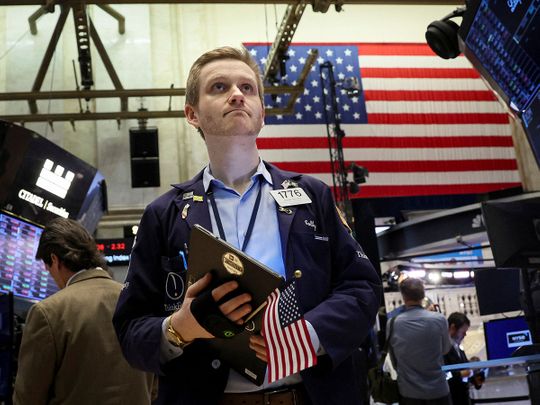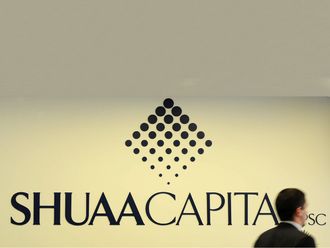
Highlights
- US jobs increase more than expected in August
- Wage growth slips, while unemployment rate edges higher
- Latin American currencies and stocks rise
Wall Street opened sharply higher after the August US payrolls report showed stronger-than-expected hiring but a climb in the unemployment rate to 3.7% eased some concerns about the Federal Reserve being overly aggressive in raising interest rates as it attempts to bring down high inflation.
However, gains were erased after Gazprom, the state-controlled firm with a monopoly on Russian gas exports to Europe via pipeline which were due to restart on Saturday, said it could not safely restart deliveries until it had fixed an oil leak found in a vital turbine and did not give a new time frame.
"Definitely the afternoon overshadowing the good data from this morning, the afternoon has been stolen from us by those headlines out of Europe," said Zach Hill head of portfolio management at Horizon Investments in Charlotte, North Carolina.
Thin trading volume
Analysts also pointed to thin trading volumes ahead of the extended holiday weekend helping to exaggerate market moves.
The Dow Jones Industrial Average fell 337.98 points, or 1.07%, to 31,318.44; the S&P 500 lost 42.59 points, or 1.07%, to 3,924.26; and the Nasdaq Composite dropped 154.26 points, or 1.31%, to 11,630.86.
Markets are closed on Monday for the Labor Day holiday. Energy was the only major S&P sector to end the session in positive territory, up 1.81%.
While payrolls topped expectations, average hourly earnings rose 0.3% compared with estimates of 0.4%, while the unemployment rate edged up to 3.7% from a pre-pandemic low of 3.5%, indicating that the Fed's efforts to front-load rate hikes were beginning to take effect.
Wage growth data is seen as important to the Fed's deliberations on increasing interest rates as the central bank looks to bring inflation, running at four-decades high, back to its 2% target. Expectations for a third straight 75 basis point hike from the central bank at its September meeting fell to 56%, according to CME's FedWatch Tool down from 75% the day prior.
The focus now shifts to the August consumer price report due mid-month, the last major data available before the Fed's Sept. 20-21 policy meeting.
Aggressive policy tightening
Fears of aggressive policy tightening have sent stocks lower after hitting a four-month high in mid-August, with the S&P 500 falling about 7% since the day before Fed Chair Jerome Powell's hawkish remarks last week about rate hikes. His views were later echoed by other policymakers. All the three main indexes suffered their third straight weekly loss, as the Dow fell 2.99%, the S&P 500 declined 3.29% and the Nasdaq dropped 4.21%.
Volume on US exchanges was 9.95 billion shares, compared with the 10.48 billion average for the full session over the last 20 trading days.
Declining issues outnumbered advancing ones on the NYSE by a 1.34-to-1 ratio; on Nasdaq, a 1.65-to-1 ratio favoured decliners. The S&P 500 posted three new 52-week highs and 14 new lows; the Nasdaq Composite recorded 47 new highs and 184 new lows.
Latin American shares, currencies end week higher
Latin American currencies and stocks rose at the end of a tumultuous week on Friday after a key jobs report from the United States offered hope that the Federal Reserve may cool off on its aggressive policy tightening cycle.
The MSCI's index for Latin American currencies gained 1.1%, outperforming the broader emerging markets FX index, which was flat. Brazil's real and Mexico's peso rose more than 1% each.
Data showed U.S. employers hired slightly more workers than expected in August, though the unemployment rate increased to 3.7%, taking some shine off the US dollar and aiding riskier assets.
"The headline NFP figure was a little larger than expected at 315,000 which may have created that initial unease as a knockout report could have effectively paved the way for a 75 basis point rate hike this month," said Craig Erlam, senior market analyst at OANDA.
"But once you dig a little deeper, there are aspects of the report that will please the Fed and support the case for easing off the brake."
Latin American stocks rose 2%. Following a lackluster performance in the month of August amid bets of tightening monetary policy by central banks across the world and volatile commodity prices, investors will now focus on the US Federal Reserve's upcoming meeting in September.
Brazilian equity markets rose 0.8% after data showed industrial output rose 0.6% in July from June, slightly below market expectations but enough for it to offset the 0.3% drop seen in the previous month.
Brazilian steelmaker Gerdau SA and heavy vehicle parts manufacturer Randon SA rose 3% and 1.5%, respectively, as they announced late on Thursday they have agreed to form a strategic partnership to provide truck and semi-trailer rental services.












